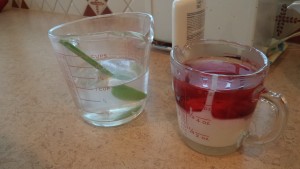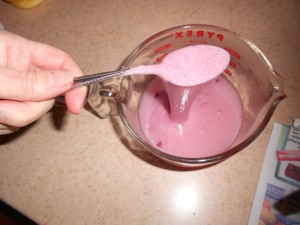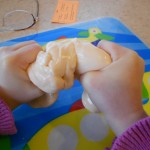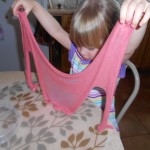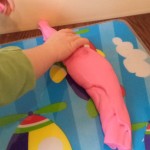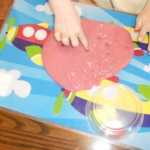No matter what recipe you use, or what you call it, slime messy play is great for fun and learning. It appeals to kids of various ages and stages, past the everything-in-the-mouth stage, that is.
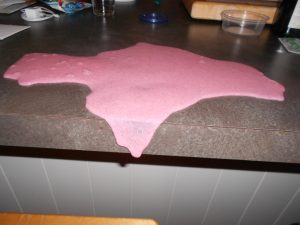
Slime is a messy play activity that can be contained in a fairly small area, but you need to watch it. Slime will spread out all over and keep going. After discovering that slime would drip right over the edge of the counter, Big Sister noticed it made a long string right down to the floor. She wondered how long a string it could make so she stood on a chair and let some drip from her hand. Sure enough, it made a string that far too. I wanted to stand on a chair and see if the slime would make an even longer string without breaking, but I waited until the kids were not in the kitchen. By the way, it did.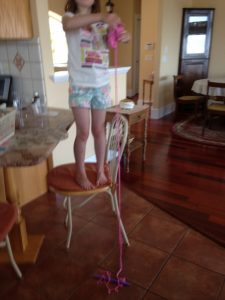
Another time, we read about blowing bubbles with slime. That sounded really cool but how can slime make bubbles? It’s much thicker than soapy water. This took a few tries but it does indeed work! Once a bubble is started, it grows just holding it. Basically, you stick a straw into a bunch of slime and blow. The bubble doesn’t pop like gum but starts to get holes and collapse.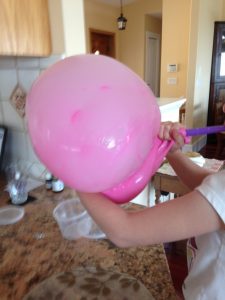
Little Sister likes to pretend she is cooking with slime. She fills a few toy pots and pans with slime and then ‘cooks’ it. Sometimes, a batch of slime will be thicker than other ones, so it can be rolled and molded.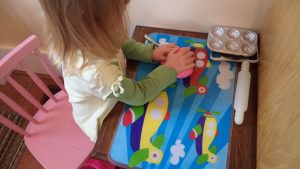
Slime has almost unlimited opportunities for creative play. There is no right or wrong way to play with slime, so children are free to explore and create. The sense of touch is highly activated and the sense of freedom is also stimulated. Does your child enjoy slime messy play?

